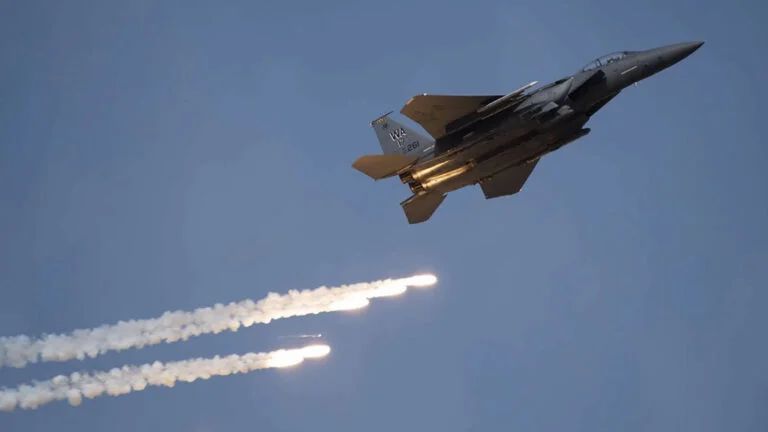The AIM-120 AMRAAM Achieves Unprecedented Long-Range Air-to-Air Missile Shot
In a remarkable feat of precision and technology, an F-15C Eagle fighter jet executed a groundbreaking long-range air-to-air missile shot last month, marking a significant milestone in aerial warfare. The event, conducted during a Weapons System Evaluation Program (WSEP) East event at Tyndall Air Force Base, Florida, showcased the capability of the radar-guided AIM-120 AMRAAM missile. Although the exact distance between the fighter and its target, a BQM-167 sub-scale drone, has not been disclosed, it is hailed as “the longest known air-to-air missile shot to date” by the U.S. Air Force.

The achievement underscores the Air Force’s commitment to extending the reach of its aerial engagements, especially in an era where long-range capabilities are becoming increasingly vital. The Gulf Range Complex, spanning over 130,000 square miles of training airspace over the Gulf of Mexico, provided an ideal location for this historic test, enabling large-scale air combat training and sustained supersonic flying.
Key players in this milestone event included the 28th Test and Evaluation Squadron (TES) from Eglin Air Force Base, Florida, which specializes in assessing the operational effectiveness of weapons systems. They collaborated with the 83d Fighter Weapons Squadron at Tyndall, which hosts WSEP East events. Major Aaron Osborne of the 28th TES emphasized the importance of partnerships and the expansion of capabilities to enhance weapons employment.

The AIM-120D missile, likely used in the test, boasts significant range improvements compared to its predecessors. Although precise performance figures are classified, it is estimated to have a striking range of 75 to 100 miles. However, practical factors, such as the launching aircraft’s energy and altitude state, influence a missile’s effective range.
The claim of the longest missile engagement is noteworthy, especially considering the historical range of the U.S. Navy’s AIM-54 Phoenix and foreign air-to-air missiles. This achievement suggests that the AIM-120D’s flight profiles exceed the reach of these weapons.

The test’s success may be attributed in part to the F-15C’s advanced active electronically scanned array (AESA) radar, the APG-63V3, which enhances targeting capabilities. Additionally, networked missiles and third-party sensors can provide targeting data, allowing engagements without the launching aircraft having to lock onto the target.
The test aligns with the 2018 National Defense Strategy’s call for increased lethality and affordability. As Russia and China actively develop their own very long-range air-to-air missiles, the U.S. is determined to maintain its competitive edge.

While the AIM-120 AMRAAM has demonstrated its impressive capabilities, the U.S. Air Force and Navy are already collaborating on the AIM-260, a next-generation air-to-air missile set to replace the AMRAAM. Expected to surpass the AIM-120’s range and match international competitors, the AIM-260 signifies the continued pursuit of excellence in long-range aerial warfare.
With the groundwork laid for modernizing range capabilities, we can anticipate further record-breaking AIM-120 tests and the introduction of new, beyond-visual-range air-to-air missiles optimized for the future of aerial combat. The quest for superior long-range capabilities is relentless, and the future of aerial warfare promises exciting developments.







